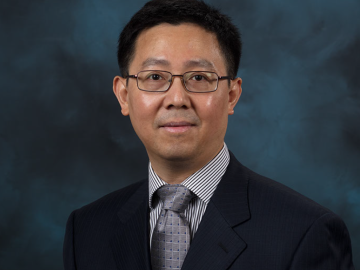
Filter News
Area of Research
- (-) Biology and Environment (34)
- (-) Materials (75)
- (-) National Security (18)
- Advanced Manufacturing (3)
- Biological Systems (1)
- Clean Energy (68)
- Computational Biology (1)
- Computational Engineering (1)
- Computer Science (3)
- Fusion and Fission (7)
- Fusion Energy (2)
- Isotopes (7)
- Materials Characterization (2)
- Materials for Computing (9)
- Materials Under Extremes (1)
- Neutron Science (32)
- Nuclear Science and Technology (7)
- Quantum information Science (5)
- Supercomputing (81)
News Type
News Topics
- (-) Advanced Reactors (3)
- (-) Biomedical (17)
- (-) Machine Learning (19)
- (-) Materials (62)
- (-) Mathematics (3)
- (-) Quantum Science (11)
- (-) Summit (12)
- (-) Transportation (9)
- 3-D Printing/Advanced Manufacturing (22)
- Artificial Intelligence (25)
- Big Data (12)
- Bioenergy (42)
- Biology (60)
- Biotechnology (11)
- Buildings (4)
- Chemical Sciences (30)
- Clean Water (10)
- Climate Change (35)
- Composites (7)
- Computer Science (42)
- Coronavirus (13)
- Critical Materials (8)
- Cybersecurity (19)
- Decarbonization (22)
- Energy Storage (28)
- Environment (80)
- Exascale Computing (6)
- Frontier (5)
- Fusion (6)
- Grid (9)
- High-Performance Computing (24)
- Hydropower (5)
- Isotopes (11)
- ITER (1)
- Materials Science (56)
- Mercury (6)
- Microscopy (25)
- Molten Salt (2)
- Nanotechnology (32)
- National Security (34)
- Net Zero (3)
- Neutron Science (31)
- Nuclear Energy (15)
- Partnerships (15)
- Physics (26)
- Polymers (11)
- Quantum Computing (2)
- Renewable Energy (2)
- Security (11)
- Simulation (13)
- Space Exploration (1)
- Sustainable Energy (30)
- Transformational Challenge Reactor (3)
Media Contacts

Scientists at ORNL have confirmed that bacteria-killing viruses called bacteriophages deploy a sneaky tactic when targeting their hosts: They use a standard genetic code when invading bacteria, then switch to an alternate code at later stages of

Alice Perrin is passionate about scientific research, but also beans — as in legumes.

When Addis Fuhr was growing up in Bakersfield, California, he enjoyed visiting the mall to gaze at crystals and rocks in the gem store.

Hydrologist Jesús “Chucho” Gomez-Velez is in the right place at the right time with the right tools and colleagues to explain how the smallest processes within river corridors can have a tremendous impact on large-scale ecosystems.

Zheng Gai, a senior staff scientist at ORNL’s Center for Nanophase Materials Sciences, has been selected as editor-in-chief of the Spin Crossover and Spintronics section of Magnetochemistry.

U2opia Technology, a consortium of technology and administrative executives with extensive experience in both industry and defense, has exclusively licensed two technologies from ORNL that offer a new method for advanced cybersecurity monitoring in real time.

Jordan Hachtel, a research scientist at ORNL’s Center for Nanophase Materials, has been elected to the Board of Directors for the Microanalysis Society.

Three scientists from the Department of Energy’s Oak Ridge National Laboratory have been elected fellows of the American Association for the Advancement of Science, or AAAS.

Jingsong Huang, a staff scientist at ORNL’s Center for Nanophase Materials Sciences, has been selected as an associate editor of Frontiers in Soft Matter.

As part of a multi-institutional research project, scientists at ORNL leveraged their computational systems biology expertise and the largest, most diverse set of health data to date to explore the genetic basis of varicose veins.


